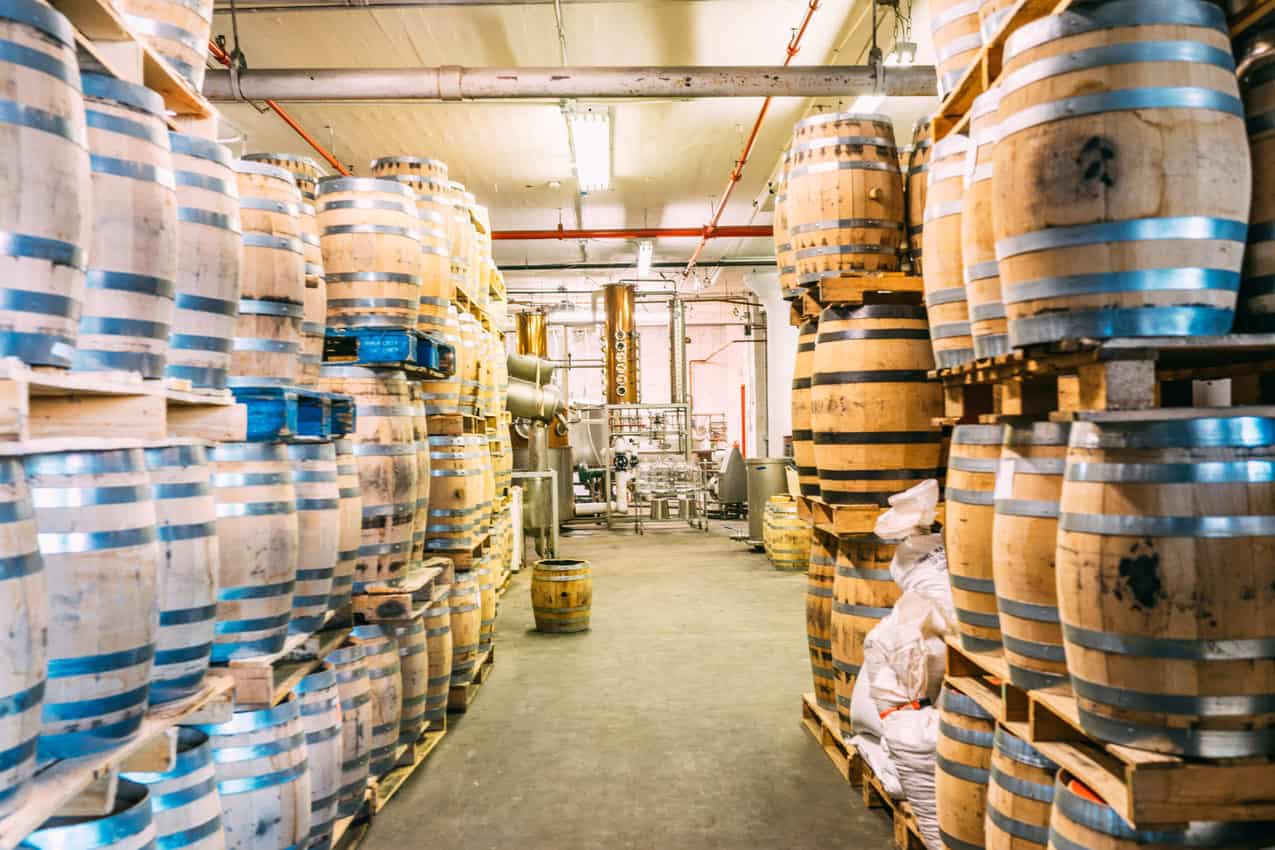
By Graham Simmons

A fish frying in boiling oil might not be the stuff of gripping story material.
But when the fish is no ordinary fish, the oil is a secret concoction that would put Colonel Sanders to shame, and the restaurant has given its name to a whole street, then the story takes on a new dimension.
Cha Cá is a difficult name for foreigners to say, given the six distinct tones of the Vietnamese language. The nearest you can get to it in English, in both tone and pronunciation, is the word “chucker.”
It then becomes easy to remember the name of this street in Hanoi’s Old Quarter – and easier still when you learn that Cha Cá means “braised fish”. Cha Cá Là Vong (Cha Ca La Vong) is an unassuming two-story restaurant about half-way along Chucker Street.
Some say that the restaurant is in fact over 200 years old. Others put its age at a mere 130. Whatever the true age, the restaurant has become famous for just one dish (you guessed it – Braised Fish!)
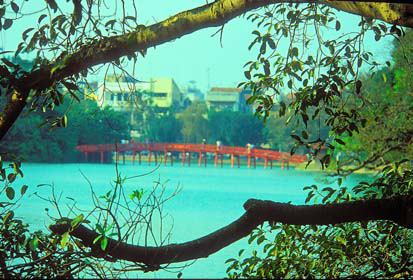
The creation of this dish has been attributed to the Doan family, who for hundreds of years have lived at Number 14 Chucker Street. To draw attention to the restaurant the Doan family erected a statue of La Vong (old fishermen), with a fishing rod on one hand and a bamboo reel in the other hand – hence the name Cha Ca La Vong.
Today, Ngo Tho Tanh and her daughter Le Bich Loc, direct descendants of the Doan family, are the managers of the Cha Ca restaurant. My dining partner Le Thu Thuy has given the restaurant rave reviews, so I accept her recommendation that this is THE place to eat in Hanoi.
Climbing a rickety wooden staircase, we ascend to the modest dining room, with tables and chairs overlooking Chucker Street.
No sooner are we seated than a charcoal-fed brazier is placed on our table, along with eight or so side dishes – including mam tom (fermented shrimp paste mixed with rice wine and lemon juice – definitely an acquired taste, which I didn’t have long enough to acquire); a plate of freshly roasted peanuts; curried Anethum (a vegetable); and dishes of chopped fennel, shredded lettuce, cilantro, basil, Vietnamese mint and other herbs.
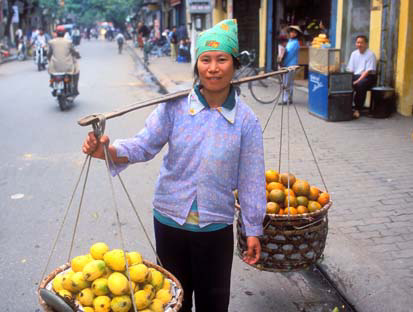
Then comes the pièce de resistance – the main course itself. A pan containing about one cm of a mixture of ghee and oil is placed onto the brazier, into which is stirred an ample quantity of diced, spiced fish.
Using chopsticks, we then add portions of the vegetables and sauces. The whole is then stirred and simmered, until a couple of minutes later, the mixture is served piping hot, with white rice noodles (vermicelli).
“How do you like the mam tom?” asks Thuy.
“It would be OK if I didn’t have a sense of smell”, I have to reply.
“Then just try this dip instead”, she says, pointing to a bowl of lime juice with freshly cracked black pepper.
And the verdict for the meal? Delicious and intriguing, to say the very least. I found that the complex blend of flavors was a little overpowered by the ghee – but then, who am I to criticize a proprietary recipe dating back hundreds of years?
Later – much later – I learn some of the secrets of preparing this dish. The best fish to use is known locally as lang fish, though sturgeon or other white fish can be used as a substitute.
The fish has to be carefully prepared before cooking. Galangal and saffron are ground and mixed with water, and then several drops of rice wine and high-quality nuoc cham (fish sauce) are added. The diced fish is soaked in this solution for about two hours before cooking.

For most diners, a meal at the Cha Ca is something very special. “I don’t eat here every day”, says Thuy. “For us Hanoi residents, dining at the Cha Ca is a luxury, something we can only afford maybe once a month.” The bill for the two of us comes to 130,000 Vietnamese dong, or about $US10.
Besides the Cha Ca restaurant, every street in Hanoi’s old quarter has its own craft specialty. Chucker Street is no exception. Upon leaving the restaurant, we pass a shop displaying nothing but brightly colored ceramic pigs.
Each little piggy wears a grin from ear to ear. For a moment I wonder why, but the solution is obvious – they must have just dined at the Cha Ca La Vong!
But Chucker Street is just one of the 36 “guild” streets among the many streets making up the Old Quarter. In former times, each street was named for the major commodity produced in the street. Thus Hang Thiec (Tin Goods Street) produced tinwares; Hang Ngang (Silk Street) was the center of the finished silk trade, and Hang Non (Conical Hat Street) was peopled by makers of the palm-leaf hats that have become a Vietnamese hallmark.
Today, the names are the same but the goods produced have changed a little; for example, Hang Thiec’s main product nowadays is galvanized iron tanks for producing bia hoi, a rustic draft beer.
Hanoi, which will be celebrating its thousandth birthday in the year 2010, is often touted as “the Paris of Asia”. This is an apt description for a city that many have described as amongst the most beautiful in the world. What I DIDN’T expect is that every street, down to the narrowest side alleys in the Old Quarter, is leafy, shaded and cool.
At the same time, eerie calm and quiet pervade the ether, as the silence between motorcycle roars is punctuated by bicycle bells that sound like the peal of a church carillon.
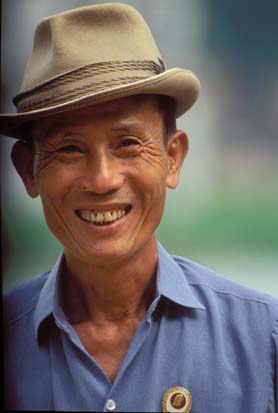
Traffic in Hanoi flows like water around rocks in a river. Sometimes it is little short of miraculous that there are so few accidents; it seems that an unseen “traffic warden in the sky” is keeping a watch over the trajectory of each and every bicycle and motorbike. On one occasion, I remember being overtaken by a pair of motorbikes, the riders still managing to keep up a conversation as they passed on either side.
Getting your bearings in Hanoi is not too difficult. Lying along the left bank of the Hong River, the city’s landscape is delineated by a number of lakes. The focal point of the city is the urban oasis of H? Hoàn Ki?m (Lake Hoan Kiem).
Hoan Kiem (“Restored Sword”) lies just south of the Old Quarter which includes Hang Bo Street. A natural lake, it’s named after a 15th-century incident in which a golden turtle is said to have risen out of the Lake and snatched a charmed sword from the Emperor’s hands.
This, the story goes, is the very same sword used to gain victory over the Ming Chinese, who at the time were invading Vietnam.
But what does this story mean? Maybe it tells us that victory has its limits: when the battle has been won, it’s time to lay down arms and get on with the job of living. This could be a theme for modern Vietnam.
The name Hang Bo means “street of bamboo baskets”, as this used to be the craft specialty of the street. Today, Hang Bo Street is more of a “multi-purpose” street, whereas the shady cross-street Thuoc Bac is still predominantly the domain of locksmiths. Deeper in the Old Quarter, you find streets in which all the shops still: specialize in one commodity: rolls of copper wire, or embroidery, or tiles and plumbing fixtures- there’s even a street where all the shops sell nothing but motorbike seats.
The streets of the Old Quarter are now experiencing rapid development, and with limited space in the Old Quarter, the only way to build is up. No matter how narrow a building, it seems that there is always room for just one more story. The result is a teetering structure like a tin-roofed tower of Babel, which threatens at any moment to crash down onto the street below.
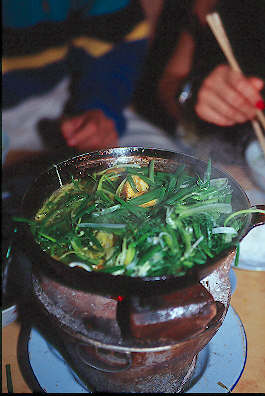
Early morning, the pavements of the streets spring to life. Hanoi is not Calcutta, and the people don’t need to sleep on the streets, but for the rest of the day, life is lived to the full upon its pavements and byways. Well before daybreak, the rubbish that accumulates on the street has all been swept into little heaps, and then carted away.
By dawn, the street is as clean as a Swiss whistle. Householders set up little electric motors to draw water from the wells beside the curb.
This activity soon gives way to breakfast stalls, selling fresh French rolls, noodle soup and strong filter coffee. Everyone sits down to eat, even fully-grown adults perched on little stools that look like kindergarten chairs.
Westerners need time to adjust to this toy town furniture – it calls for anatomical contortions that a non-yogi may find difficult. Later in the morning, traffic intensifies. Elegantly dressed ladies and immaculately dressed businessmen ride past on their Honda “Dream Machines”.
By mid-morning, life throbs with an intensity that surprises even those used to experiencing a city that wears its guts exposed for all to see. Cycles, cyclos (trishaws) and motorbikes go past, many laden to the breaking point.
Here’s a cyclo groaning under the weight of cans of “pork liver paste”. Another carries flowers, and yet another, graceful women out shopping.
With the growth of tourism in Vietnam, the face of the Old Quarter of Hanoi is now changing. Five years ago, there were few tourist facilities in this precinct, but now Internet cafés and hotels are springing up.
Some of the former mini-factories are now being replaced by brand-new hotels, with the Espacen, Fortuan and My Lan hotels all constructed since 1999.

By lunchtime, Hanoi is ready to take a break. Look for the sign com, which means “rice”. Ask for this, and you get a plate of rice and a number of other dishes from which you can take your pick.
Stick to popular eating places, and the food is fine. But if you see a place with a sign like “food for tourists”, avoid it like the plague! Unsuspecting diners will be treated to an almost inedible ersatz version of what the Vietnamese consider to be “Western” food.
After lunch, the residents of the Old Quarter linger a while over cups of green tea. Then it’s back to business, or the thousand other activities that grace the pavement.
Late in the afternoon, the elderly gentlemen of the street don berets, or suits and ties, and wander down to Lake Hoan Kiem. Here they sit and smoke and talk, or play mah-jongg, or just watch the passing parade.
Come nightfall, the people of Hang Bo Street still use the pavements as a sitting room, dining room and kitchen combined. Dinner is taken early, but this is by no means the signal to end the day.
Kids bring out their schoolbooks and do their homework under the street-lamps. Commerce goes on until well into the night, with most shops staying open until around 10 pm.
Even after midnight, there’s activity in Hang Bo Street. Only in the wee hours of the morning does the street get a little quieter. But not for long: the daily round is soon to resume. This is Hanoi, where getting on with life is an art form.
Getting There:
Vietnam Airlines flies regularly from Los Angeles to Hanoi, via Taipei, in a code-share arrangement with China Airlines.
Where to Stay: (Country Code for Vietnam is +84, and area code for Hanoi 4):
Hanoi, formerly with a dearth of good accommodations, is now undergoing a hotel boom. A range of hotels, from luxury to budget, is given here, with prices in $US:
Camellia Hotel, my favorite hotel in Hanoi, but you won’t find it in any of the guide books: excellent and friendly service, 81 Thuoc Bac Street, tel 828 2376, fax 828 2404, $US15 including breakfast, for clean ensuite rooms with 9-channel satellite TV.
Sofitel Metropole, the grand old hotel of Hanoi, 15 Ngo Quyen St, tel 826 6919, fax 8826 6920, $US200 single or double.
Bao Son Hotel, 2 Lang Trung Street, tel 835 3536, fax 835 5678, 4-star comforts, Australian general manager, $120-180, plus 15% taxes.
Daewoo Hotel, Hanoi’s first 5-star establishment, 411 rooms; the only member in Vietnam of Leading Hotels of the World, Ngoc Khanh and Lien Giai Streets, tel 834 9467, fax 834 5744.
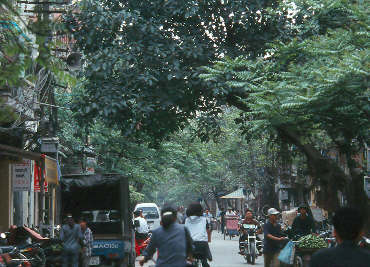
Hoang Ngoc (Oriental Pearl) Hotel, elegantly furnished, just 14 rooms: a true “boutique” establishment, tel 823 2660, fax 823 2605, $US29-59 (including buffet breakfast), plus 15% taxes (note: they give a 20% discount if you stay a year or longer!).
Queen Café and Guest House, 65 Hang Bac Street, a good café very popular with travelers (this can be a plus or a minus), and with very basic rooms attached, tel 826 0860, $US4-15.
For more accommodation options, find unique Hanoi hotels and interesting tours in Hanoi.
Cha Ca Restaurant:
Cha Ca La Vong is at Number 14, Cha Ca Street, in the Old Quarter of Hanoi. For reservations, tel 825 3929. A new branch (is this the start of a MacViet trend?) opened at 107 Nguyen Truong To Street in 1999 (tel 823 9875)
Motorbike Hire:
Good quality Japanese bikes are on hire throughout Hanoi: ask at your hotel. Going price is $US10 a day. Petrol (gasoline) costs just 3400 dong (US 30¢a litre).
Must See:
Lake Hoan Kiem, with Ngoc Son Pagoda and Tortoise Tower.
Van Mieu Temple of Literature, built in 1070, and still a potent symbol of the reverence that the Vietnamese attach to scholarship.
Hang Quang Street, a whole avenue of shops selling Buddhist paraphernalia – ceremonial fans and lanterns, ceremonial flags for funerals, etc.
Ly Thuong Kiet Street: “Embassy Row”, lined with graceful Jacaranda trees. Hai Ba Trung Temple, in memory of the famous 1st Century Trung sisters.
Graham Simmons is a freelance travel writer and photographer who lives in New South Wales, Australia.
- Tunisia: Being of Service in Zammour - April 27, 2024
- Greece Getaway: Camping Hacks for Your Next Getaway - April 25, 2024
- Products and Clothing You Might Enjoy - April 25, 2024


